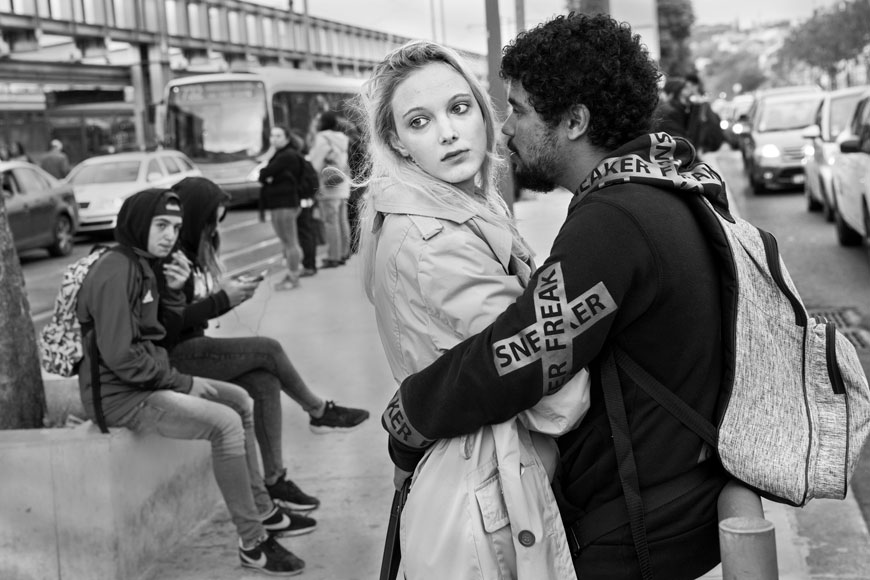6 Easy Facts About Street Photographers Explained
6 Easy Facts About Street Photographers Explained
Blog Article
Some Known Factual Statements About Street Photographers
Table of ContentsIndicators on Street Photographers You Need To KnowAll About Street Photographers9 Easy Facts About Street Photographers ShownWhat Does Street Photographers Do?How Street Photographers can Save You Time, Stress, and Money.
Road digital photographers do not necessarily have a social function in mind, but they prefer to isolate and catch moments which could otherwise go undetected.He was influenced by numerous of those that affected the street professional photographers of the 1950s and '60s, he was not mainly interested in capturing the spirit of the road., that functioned side by side with photographers attempting to capture the essence of urban life.
As a result of the somewhat primitive modern technology readily available to him and the lengthy exposure time called for, he battled to capture the pressure of the Paris streets. He try out a collection of photo approaches, trying to discover one that would permit him to catch movement without a blur, and he located some success with the calotype, patented in 1841 by William Henry Fox Talbot. While the digital photographers' subject was basically the same, the results were noticeably various, showing the impact of the professional photographer's intent on the character of the photos he generated.
How Street Photographers can Save You Time, Stress, and Money.
Provided the great top quality of his pictures and the breadth of material, engineers and artists frequently acquired Atget's prints to use as reference for their very own job, though commercial rate of interests were rarely his main motivation. Rather, he was driven to photograph every last remnant of the Paris he enjoyed.

Unlike his peers, Brassa used a larger-format Voigtlnder video camera with a much longer exposure time, requiring him to be a lot more calculated and thoughtful in his method than he could have been if utilizing a Leica. (It is believed that he might not have been able to manage a Leica back then, but he did, however, utilize one in the late 1950s to take colour photographs.) Brassa's photographs of the Paris abyss lit up by artificial light were a discovery, and the compilation of the series that he released, (1933 ), was a major success.

Street Photographers - The Facts
It is due to this basic understanding of the art of image taking that he is usually attributed with rediscovering the medium all over once more approximately a century given that its creation. He took photographs for greater than a half century and influenced generations of digital photographers to trust their eye and intuition in the moment.
These are the inquiries I will attempt to respond to: And after that I'll leave you with my very own pop over to these guys definition of road digital photography. Yes, we do. Allow's begin with defining what a meaning is: According to it is: "The act of specifying, or of making something precise, distinctive, or clear".
No, most definitely not. The term is both limiting and misguiding. Seems like a road photography must be pictures of a streets best?! And all road digital photographers, except for a handful of absolute beginners, will totally value that a road is not the this page essential component to street digital photography, and in fact if it's a photo of a street with perhaps a couple of uninteresting people not doing anything of passion, that's not road digital photography that's a picture of a street.
4 Easy Facts About Street Photographers Shown
He makes a valid factor do not you think? Nevertheless, while I agree with him I'm uncertain "candid public photography" will certainly capture on (although I do kind of like the term "honest photography") due to the fact that "street photography" has been around for a very long time, with numerous masters' names attached to it, so I believe the term is right here to remain.
Inside?! I hear you scream as you shake your fist to the sky. Why not? You can shoot at the coastline, at an event, in an alley, in a park, in a piazza, in a cafe, at a museum or art gallery, in a city station, at an occasion, on a bridge, under a bridge ...
Yes, I'm afraid we have no selection! Without regulations we can not have a definition, and without an interpretation we don't have a category, and without a genre we do not have anything to specify what more we do, therefore we are stuck in a "rules interpretation style" loophole! And no-one intends to obtain stuck in a loophole. - Street Photographers

Report this page